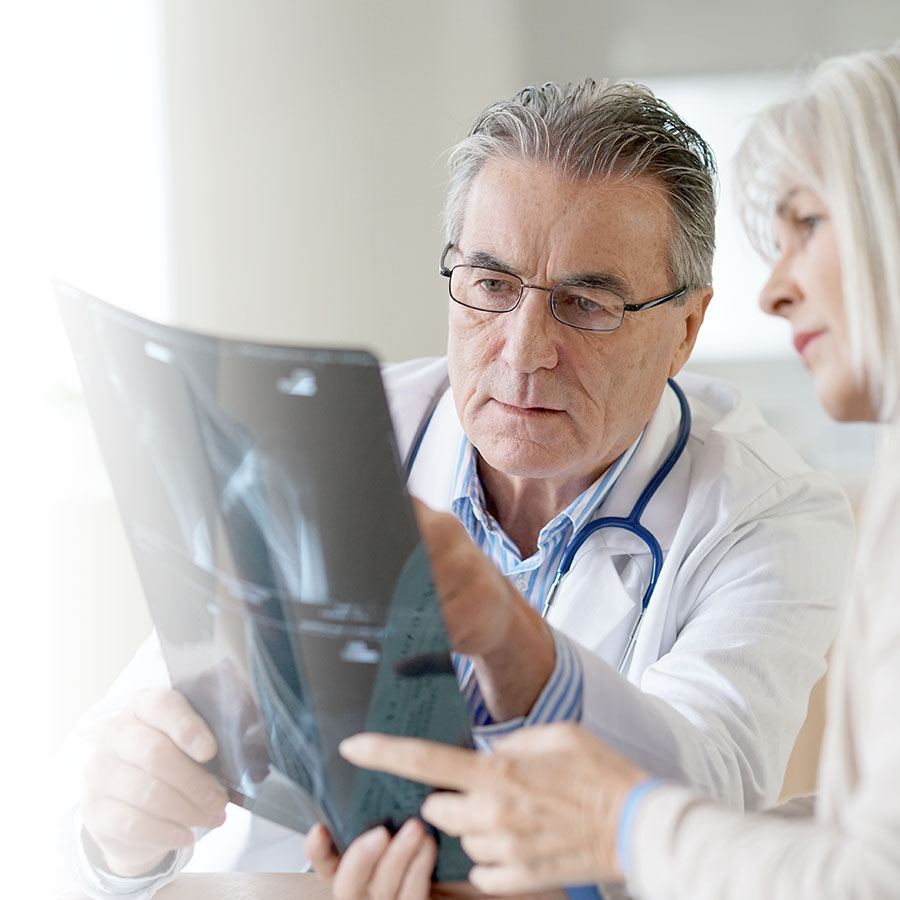Bone density weakens with age, making them more prone to fractures. Find out how to manage bone health and prevent osteoporosis!
Osteoporosis: a silent disease
No one is immune to osteoporosis and the risk of being affected by it increases with age. Because osteoporosis weakens bones, its main consequence is the increased risk of fractures. This weakening of bones stems from significant bone loss, which decreases the amount of bone material and the quality of bone structure.
Generally, in the early stages, osteoporosis has no symptoms. The onset of the following signs and symptoms, among others, is indicative that the disease is established:
- loss of height over the years
- curve in the upper back
- fractures (hip, spine and wrist are the most common)
- back pain
Because bone loss begins at age 30, it is important to focus on preventive measures in order to keep the bone mass you have built up.
Risk factors
Certain factors increase the risk of the onset of osteoporosis. In fact, this risk is higher if you:
- are over 65
- are a woman
- take certain medications that can cause bone loss
- are affected by certain other conditions such as hyperthyroidism, an inflammatory bowel disease or chronic kidney disease
- have a family history of osteoporosis
- are menopausal
- have small bones or are thin
- have an insufficient intake of calcium and vitamin D
- are a smoker
- are sedentary
- consume excessive amounts of caffeine
Preventive measures for osteoporosis
- Exercise regularly to increase bone strength. Brisk walking, tennis, aerobics, and weight lifting are good examples of beneficial physical activities for bone health.
- Make sure you get enough calcium and vitamin D
- Quit smoking
- Reduce your consumption of alcohol and caffeine (tea, coffee, cola and dark chocolate)
- Maintain an adequate food intake of protein (meat, fish and substitutes)
Treatments: should you take medication or not?
Many people wonder whether taking medication helps. Yet, there is no better way to obtain comparable benefits than medication, to prevent fractures. The importance of medication in the treatment of osteoporosis has been proven many times over. However, it is important not to neglect getting a sufficient intake of calcium and vitamin D, physical activity, and other prevention measures.
Your pharmacist can provide information about optimal and safe use of medications against osteoporosis. To maximize results, it is important to carefully follow your treatment even if you don't feel its beneficial effects.
Calcium and vitamin D
Vitamin D is necessary for proper calcium absorption, which makes bones strong and healthy.
In Canada, many people do not get their daily intake of calcium and vitamin D. Supplements can help you get 100% of the recommended daily intake.
RECOMMENDED DAILY INTAKE
|
Age Group |
Calcium (elemental) |
Vitamin D |
||
|
Adults aged 19 to 50 |
1000 mg |
400 to 1000 IU |
||
|
Adults over 50 |
1200 mg |
800 to 2000 IU |
||
|
Pregnant and breastfeeding women |
1000 mg |
400 to 1000 IU |
||
|
Sources of Calcium |
Portion |
Calcium |
Vitamin D |
|
|
Milk |
250 ml (1 cup) |
315 mg |
100 IU |
|
|
Hard cheese |
50 g (2 ounces) |
350 mg |
- |
|
|
Mozzarella cheese |
50 g (2 ounces) |
290 mg |
- |
|
|
Cottage cheese |
125 ml (1/2 cup) |
75 mg |
- |
|
|
Plain yogurt |
175 g (3/4 cup) |
300 mg |
- |
|
|
Fruit-flavoured yogurt |
175 g (3/4 cup) |
240 mg |
- |
|
|
Canned salmon |
a half 213 g can |
225 mg |
Pink : 585 IU |
|
|
Cooked broccoli |
125 ml (1/2 cup) |
40 mg |
- |
|
|
Dried figs |
3 medium size |
80 mg |
- |
|
|
Eggs |
1 |
- |
35 IU |
|
|
Tuna |
100 g |
- |
200 IU |
|
Osteoporosis screening
A bone density test is the most common way to measure bone strength. Bone densitometry is a safe and painless procedure often used to establish a diagnosis of osteoporosis and to assess treatment efficacy. If you present one or more of the risk factors, you should talk to your doctor about preventive measures, the screening test (should you be screened) and medication intended to prevent and treat osteoporosis.
Speak to your pharmacist if you have any questions about osteoporosis, prevention methods, and treatment.

